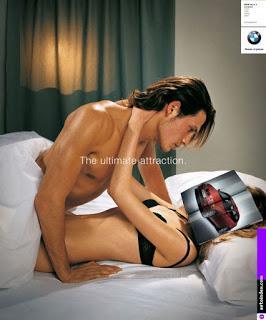Two advertisements on shared on social media channels caught my attention this week. They were from two different brands, two different industries and had two different types of messaging. One was a billboard from a leading localsupermarket chain that portrayed a woman standing in a supermarket alongside the following copy “because you would rather be in the kitchen than a queue. Visa is now your express lane” (The company has since retracted the ad in question and issued an apology on their Facebook page). The second was a TVC from Vicks that told a story of a transgender mother from the viewpoint of her adopted daughter, and said daughter questioning why her mother is denied basic civic rights. Very different in every sense of the word.
 Was the billboard the most sexist, worst advertisement we have seen come out of Sri Lanka? Arguably not (the charming White Chocolate Maliban Puff ad comes to mind). One could even go as far as to say that the idea was not to stereotype women as belonging in the kitchen, but simply say that we all (women and men) cook and hate queues. Is Vicks alone in using their TVC’s to tackle social issues and use brand values instead of the product qualities? Certainty not – my personal favorites include; Ariel discussing the role of working mothers, Tanishq portraying dusky re-marrying women, and the love between a non-hetero-normativecouple in Anouk’s Bold Is Beautiful series. Both advertisements however made me think and ask certain questions considering the conversations elicited about and around them.
Was the billboard the most sexist, worst advertisement we have seen come out of Sri Lanka? Arguably not (the charming White Chocolate Maliban Puff ad comes to mind). One could even go as far as to say that the idea was not to stereotype women as belonging in the kitchen, but simply say that we all (women and men) cook and hate queues. Is Vicks alone in using their TVC’s to tackle social issues and use brand values instead of the product qualities? Certainty not – my personal favorites include; Ariel discussing the role of working mothers, Tanishq portraying dusky re-marrying women, and the love between a non-hetero-normativecouple in Anouk’s Bold Is Beautiful series. Both advertisements however made me think and ask certain questions considering the conversations elicited about and around them. Visuals, complemented by pithy copy, a few minutes of TVC, a dialog on the radio, digital blogs, and posts – someone selling something to someone else is around us constantly. This is the reality of capitalism. Now this brings me to my first question - what is the purpose of advertisements in today’s context for brands? Simply put in the case of most brands, the purpose is to sell. You share your product with your potential consumers, tell them why it’s amazing, and convince them that they
 should spend their money on it. Is this all? I would argue that there is more – often brands advertise to tell us what they stand for. Who they are and the values they represent. They communicate these things to consumers to solidify the benefits you gain (i.e. the values the associate with) from being a part of their journey. Vick’s through its advertisement focused on the underlying ‘mother’s touch’ concept and tells us they celebrate motherhood in all its forms. Perhaps said supermarket simply wanted to make us aware that you don’t have to wait in line for as long and increase their sales? But to certain consumers this also inadvertently communicates your brand values – i.e. it is that product that is most important and not the message (intentional or not) that you are sharing.
should spend their money on it. Is this all? I would argue that there is more – often brands advertise to tell us what they stand for. Who they are and the values they represent. They communicate these things to consumers to solidify the benefits you gain (i.e. the values the associate with) from being a part of their journey. Vick’s through its advertisement focused on the underlying ‘mother’s touch’ concept and tells us they celebrate motherhood in all its forms. Perhaps said supermarket simply wanted to make us aware that you don’t have to wait in line for as long and increase their sales? But to certain consumers this also inadvertently communicates your brand values – i.e. it is that product that is most important and not the message (intentional or not) that you are sharing. As I think about this – another realization is hard to ignore. Agree or disagree, often notoriety gets attention. People are sharing the picture, talking about it, it is generating conversation and perhaps in all this our subconscious will remember the next time we are in a supermarket from the chain that we can use the Visa express lane. ‘There is no such thing as bad publicity’ we are told. In this case, the argument scrapes by but this is not always the case. Uber knows the ramifications on your bottom line thanks to bad publicity, as does Gap, the Sultan of Brunei and SeaWorld. It is a fine line and dangerous to walk – controversy and notoriety. Negative publicity can go wrong very easily, very fast and there is a reason companies shell out big bucks for the Oliva Pope’s of the public relations world.
 So, I as a person find sexism and using stereotypes of women distasteful and would only share such advertisements in the context of giving it negative publicity. Does this hold true for the majority or is it just some of us? Does sex, as we are told over and over again, sell? It seems that its appeal is fading. An article in The Balance points out “Remember, we now live in a society that gives people sex and pornography on demand, at the touch of a button. It's easy to get. So scantily-clad women in ads are not going to make the social impact that a hard-hitting political message will. This is the new reality”. Sex is not making people pick up products the way it used to – this is no longer an excuse brands can resort to when creating advertisements they argue are risqué and sexy.
So, I as a person find sexism and using stereotypes of women distasteful and would only share such advertisements in the context of giving it negative publicity. Does this hold true for the majority or is it just some of us? Does sex, as we are told over and over again, sell? It seems that its appeal is fading. An article in The Balance points out “Remember, we now live in a society that gives people sex and pornography on demand, at the touch of a button. It's easy to get. So scantily-clad women in ads are not going to make the social impact that a hard-hitting political message will. This is the new reality”. Sex is not making people pick up products the way it used to – this is no longer an excuse brands can resort to when creating advertisements they argue are risqué and sexy. This brings me to my final question - can and should some creative choices made be divorced from contextual realities? Here the contextual realities are the one-dimensional and often offensive portrayals of women in advertisements, and the continued narrow gender roles and constraints placed on us. As a feminist, I grappled with an extension of this question: do we see issues where there are minimal or none? This would have been a much easier question to answer if for example the I was looking at one of those car advertisements that feature a bikini clad woman splayed across it or women in bikini’s eating burgers and seemingly having an orgasm at the same time. In case of the now notorious billboard the lines are smaller and more blurred. Was it just unfortunately worded copy? Perhaps it simply lies in perception, but as a consumer I do have the right to call out something that doesn’t sit well with me.
In my mind, brands and companies hold a platform and they hold influence through this platform. They can show us a better version of the world, to strip away perceived norms and make us think. I believe that we as consumers also hold sway – we can ask them to be better, we can demand better. When we see what some reports say is as much as 4,000 advertisements a day then this shapes our perceptions more than we realize. It’s simple really – if you see a pink dog that many times a day, then after a while every single time you see a dog you will think of the color pink. The same way if we keep placing women in stereotypes (in the kitchen, doing chores, being a sex object) then this is how we will continue to perceive them. I for one believe that brands can be better, and we should never stop asking them to try harder. The ads that endure as classics will be those that strove to be the best and show us something different. Isn’t that how we would all like to be remembered?

